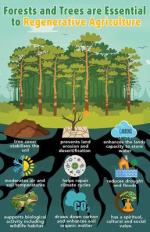 Fruitful Forest's logo
Fruitful Forest's logo"Fruitful forests"
a mini ecosystem in the city
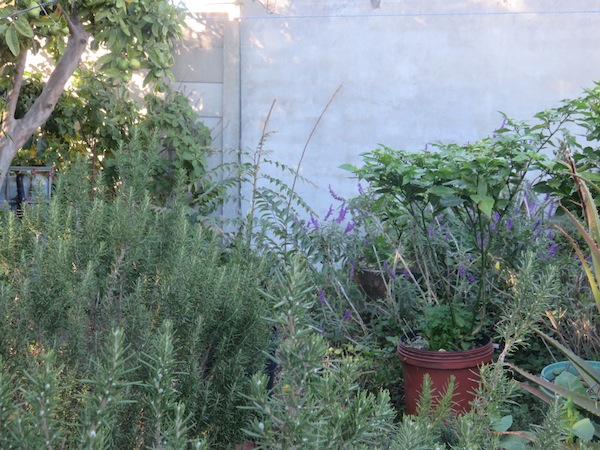 This mini ecosystem contains rosemary, guava, tamarillo, curry tree, chilis, wild spinach, edible mushrooms, and several medicinal plants. Aiming for more diversity and larger scale, all over the city.
This mini ecosystem contains rosemary, guava, tamarillo, curry tree, chilis, wild spinach, edible mushrooms, and several medicinal plants. Aiming for more diversity and larger scale, all over the city.A mini ecosystem, planted in two days, giving food forever !
Why would we possibly need manmade mini ecosystems for growing food in the city ?
Do we need hope ?
Do we need a solution that helps with climate change, poverty, and food insecurity ?
Something simple, low tech, cheap and affordable, so natural its part of every culture’s indigenous knowledge base ? Would eco volunteering be part of the solution for urban areas, as opposed to Wwoofing ?
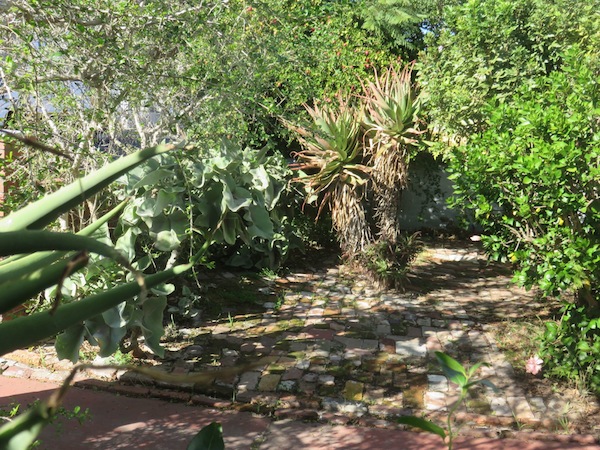 This tiny 3 x 5 mini ecosystem forest contains 3 types of indigenous African fruit tree, 3 flowering trees and medicinal aloes
This tiny 3 x 5 mini ecosystem forest contains 3 types of indigenous African fruit tree, 3 flowering trees and medicinal aloesDoes this sound incredible ?
The UN review of the 2012 conference on agriculture unanimously in dozens of scholarly articles, holds organic agroforestry up as this panacea. Seeing agroforestry as a cure all has become common knowledge. Most people interested in green issues would like to see this form of agriculture applied on a wide scale, because of its value in remediating damage to the environment, rehabilitating nature and renewing its safety net and the services it gives us.
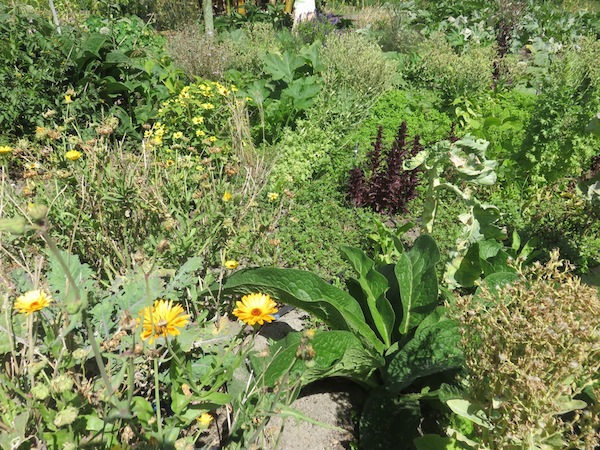 a lovely self seeding food garden at a local green NGO
a lovely self seeding food garden at a local green NGOBut agroforestry is for rural areas, what about global urbanization ?
By 2050 urban populations will rise to 70 per cent of the global population (UNHABITAT, 2009) and remediation, such as sequestering of carbon is much more effective when done close to the source.
Street trees can absorb 9 times more pollutants than more distant trees, converting harmful gasses back into oxygen (Burden, 2006) http://www.climatetechwiki.org/technology/urban-forestry. By 2050 the soils of the world will have become so degraded due to loss of soil carbon that they can no longer feed the entire global population, 70% of whom will live in cities.
Therefore the greatest chance for climate mitigation caused by people is at the carbon source, in cities.
 These beautiful flowers are self seeding, and a very pricy food if picked early
These beautiful flowers are self seeding, and a very pricy food if picked earlyHow do we go about this urban forest planting ?
Our organization accumulates skill from around the world in the engineering of tiny self maintaining urban forests. Our forests are small, but they imitate natural ecosystems which need no external inputs. We study local flora to develop our plant lists for ‘wild’ forests, on each of our major soil types, as well as upscaling what we are already doing at home in Cape Town with productive or ‘food’ forestry. We are experimenting with new food plants, what they call the ‘new package’ of self maintaining drought hardy plants that may supersede ten thousand years of relying on wheat, maize and the rest of the annual crop package we have acquired by imitation from western nations, which does enormous environmental damage.
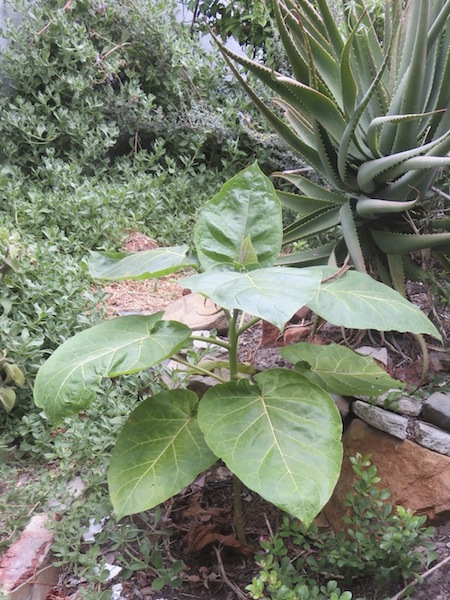 Rhus (spice), Tamarillo (fruit), Tetragonia (greens), Salvia (cooking and medicinal herb), chili and aloe (medicinal)
Rhus (spice), Tamarillo (fruit), Tetragonia (greens), Salvia (cooking and medicinal herb), chili and aloe (medicinal)Our offer to you
We give this skill package to you in the form of planting two thoroughly researched and designed tiny 7 by 7 meter forests, engineered for self care. The one forest will be on the land of the donor and its sister forest in a disadvantaged area of Cape Town. For two years after planting there will be follow up training and or maintenance, as well as workshops on food processing and crafts which arise from the forest.
If you are part of an NGO with social impact, a school or some other organization who has access to a 7 by 7 meter area on which we could plant a forest that will benefit your local community in Cape Town, please fill in your details on the form below. I will then request a 200 word description of the social benefits of your organization and a photograph of the intended site to be linked to this page so that potential partners can see what you do.
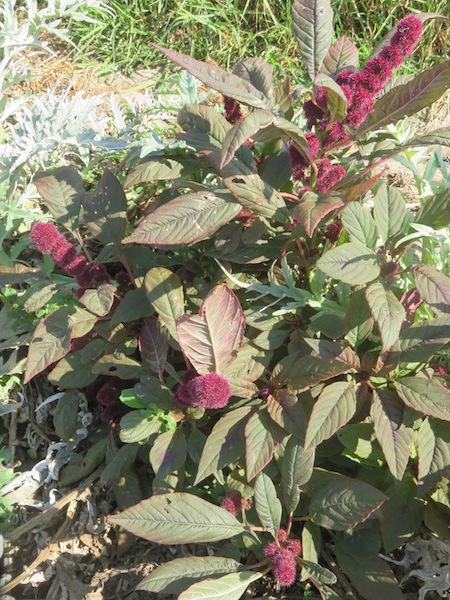 food plants can be gorgeous
food plants can be gorgeousThe forest mini ecosystem is an investment in future prosperity, health and mental wellbeing
The mini ecosystem or fruitful forest is an investment. Firstly in an organization’s public image, and secondly in the future, investing in the wellbeing of all South Africans and their baseline of prosperity. Perhaps the most salient investment in the future is in human survival because once planted our forests should be self maintaining and self perpetuating, in the best case scenario, in perpetuity, delivering a range of ecosystem services for generations to come. The forest serves multiple ecological functions, absorbing gases which cause global warming, preventing the production of these gases, attracting rain, harvesting water, storing water in soil, ameliorating rising temperatures in its micro climate by creating shade, breezes and absorbing the sun's heat.
It will anchor soil and prevent it being eroded, actually creating soil in the most effective way known, through root exudates that feed soil microbes. Unlike mono cropping and annual food plants, permanent diverse growth enhances and enriches environments rather than degrading them. The forest delivers these ecological and stress relieving services and augments human nutrition and livelihoods where it is needed most, in the heart of the urban jungle.
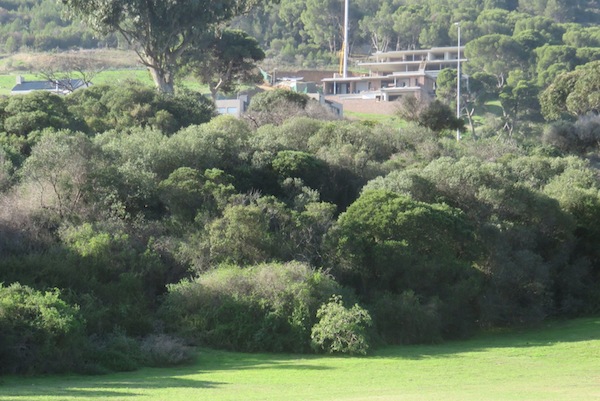 A natural mini ecosystem, a strip-forest that is fenced off with limited access in a pricy area of town
A natural mini ecosystem, a strip-forest that is fenced off with limited access in a pricy area of townSurely this is most appropriate for the rich ?
Agroforestry plantings such as tiny forests are useful to everyone in the city. Beyond the obvious, their beauty, and the rest this provides for the soul and its contribution to emotional health, there are more practical services. For example recreation and exercise. Also in the the premises of industrial buildings they mitigate carbon production at source, provide respite for workers and improve the working climate with temperature and humidity amelioration, and relaxation opportunities, and promote an eco friendly culture in the organization and in society at large. For the well heeled, agroforestry provides a much more attractive alternative to grass and trees in public spaces, as well as many more environmental and social benefits than the typical park plantings, saving the city millions in park maintenance. Agroforestry plantings of useful plants such as food plants also help the poor in a number of ways. Low labour is important.
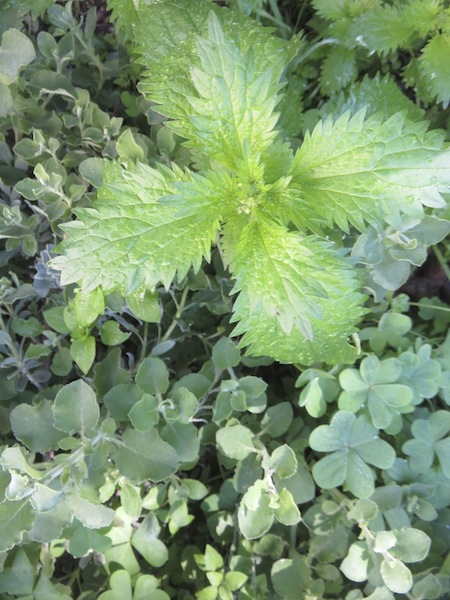 Food that needed no work but harvesting, cooking herb, and two green vegetables that self seed
Food that needed no work but harvesting, cooking herb, and two green vegetables that self seedAs a permaculture gardener I know full well how time consuming annual vegetables are. Since I converted my garden to food forest I just harvest and add trees and permanent plants from time to time.
What I harvest in the garden are the sort of plants that are usually expensive and often stale in supermarkets, such as greens, herbs, nuts and fruit, while I still rely on purchasing my carbs, like grains and root vegetables which are more difficult to grow. The forest can provide food for the poor in terms of a free source of these usually more expensive items. These can be harvested near home to supplement carbohydrate diets with vitamins, plant proteins and oils. The harvests can also be processed into high end products from herbal medicines to pickles, and sold, decreasing poverty, which is the greatest cause of malnutrition world wide at present, not a lack of staple foods.
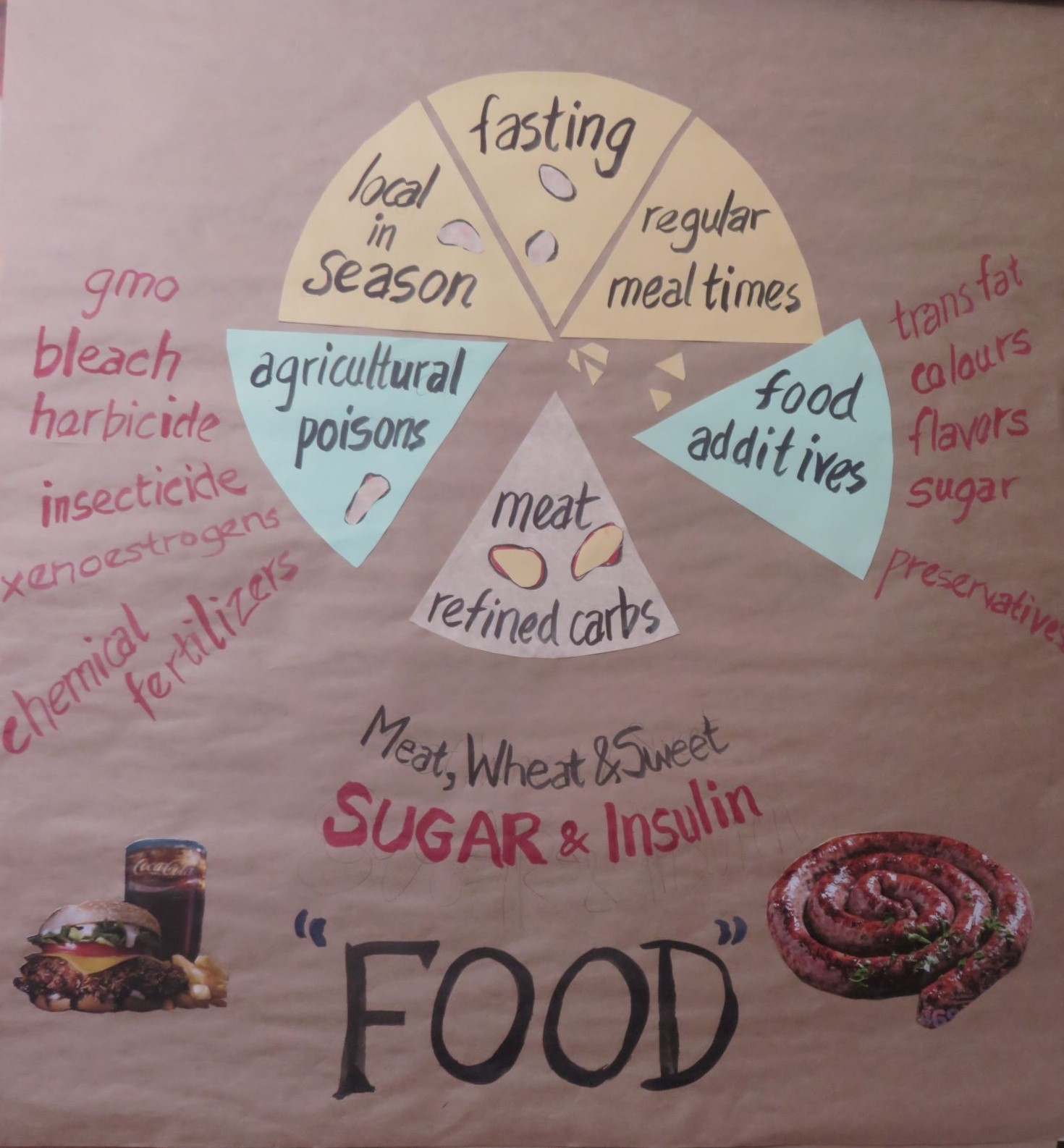 One of the most delicious green vegetables, native, adapted to drought and growing wild
One of the most delicious green vegetables, native, adapted to drought and growing wildThe benefits of the method we use
Up to 30 times more dense compared to conventional plantations.
At least 50-100 different native species planted in the same area.
30 times better noise and dust reduction.
Up to 30 times better Carbon-dioxide absorption compared to a monoculture plantation.
Guaranteed growth of at least 1 meter every year.
A completely maintenance-free, wild and native forest after the first three years.
A completely chemical and chemical fertiliser free forest that sustains itself and supports local bio-diversity.
Do you need more facts ?
The benefits of the food forest or agroforestry, and the benefits of urban forestry are so multiply proven, so well researched and documented, even a tome like the UN Agriculture review 2013 does not cover it all.
We invite you to inform yourself further on these benefits, by following links and sub articles we provide or doing your own research.
When the intelligence of this solution becomes abundantly clear we invite you to commission us to design and engineer a beautiful self maintaining forest at your premises in a partnership with business and social impact organizations. Whichever you are, we need you.
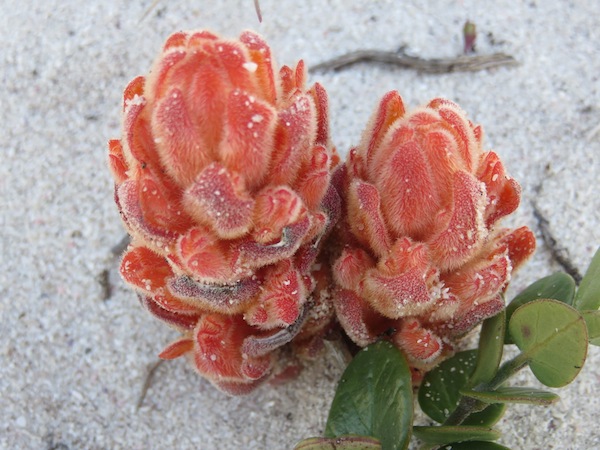 This beautiful plant, Hyobanche, or jackal's food is a root parasite and an integral part of the dune ecosystem
This beautiful plant, Hyobanche, or jackal's food is a root parasite and an integral part of the dune ecosystemHow long does it take and how much land is needed ?
This forest requires some planning, design and preparation, and depending on the type of forest you want, this can involve from a couple of weeks to two years for growing the trees. The forest itself can be planted up in a day or two with sufficient workers. The minimum
size is an area of 6 parking spaces or seven by seven meters. It then requires
only 2 years of care before it can, or rather should, be left alone to care for
itself. In ten years it should have the self perpetuating internal dynamics of a 100 year old
forest created by nature !
We recommend a maintenance contract and or maintenance training because of the specialized knowledge required for the short period of after care.
Partner with us today and plant the future !
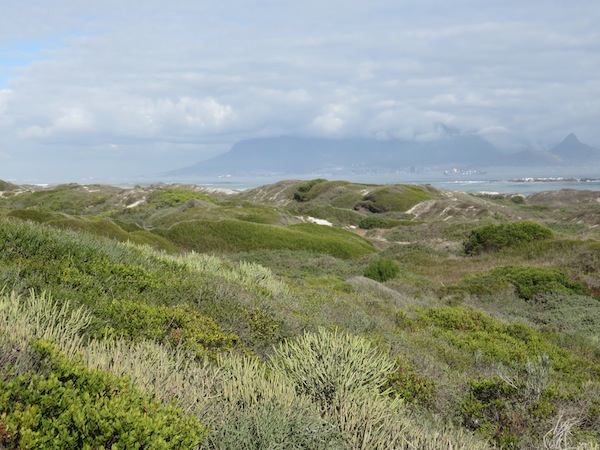 billowing green wind clipped micro forests of the west coast
billowing green wind clipped micro forests of the west coastIndigenous forests on sand at the Cape
We are studying dune forests at the moment in order to design a forest composed of indigenous plants that will do well on alkaline, acid and saline sand. Dune forests are often clipped by the wind giving them a very neat and a sensuous wave like experience. We would like to model the recreated forest on this unusual aesthetic of the dune forest, consisting of rounded or flat topped canopies that come down to the ground with open areas of shorter vegetation between them.
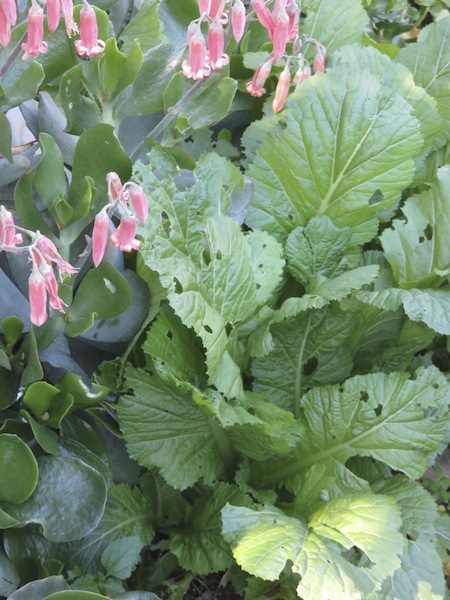 medicinal plants with lovely flowers interplanted with delicious mustard greens
medicinal plants with lovely flowers interplanted with delicious mustard greensFood forests at the Cape
The Cape has some clay soil, but a lot of sand. The sand is more likely to be farmed or built up as it lies on the flat land between the mountains and is thus more likely to be degraded and loose its nutrients and water. Therefore the first food forests are designed for sandy alkaline or slightly saline soil. We look for plants from all around the world which are not annuals that need a lot of care, but either self seed, or produce good crops from permanent vegetation. We pick the plants because they have high yields, are trouble free, and or have powerful carbon pumps for removing CO2 from the air, or other mechanisms of carbon sequestration. We include fungi because of their numerous well known ecological benefits.
The forests needs to be fenced to prevent human intrusion, however, it also needs to be harvested and enjoyed. The fencing needs to be secure but also not worth stealing, by our local wire thieves, as it will be left alone in deserted areas by night. I've collected some ideas using plastic pallets for fencing, and embellishing existing chain mesh fencing with decoration, which you can see in my fence, gates and walls album on pinterest.
------
home page for links to lots of information on natural gardening
-------
the United Nations Trade and Development conference review on Agriculture 2013
-------
-------
article on the global threat of soil loss
Would you like to place an order or enquire about our products ?
If you need more information or would like to place an order, leave your contact details and we will get in touch with you. Please leave email and phone number if you live in the SADEC region. Most of our products only get shipped locally within South Africa, except the e products (books, videos and downloadables).
What Other Visitors Have Said
Click below to see contributions from other visitors to this page...
Ria Schuurman 




Hi Caro We are still VERY interested in growing a small food forest at our foodgarden, Ubuhle Bendalo Foodgardens in Site B. Please come and inspect! We …
Restore Nature Newsletter
I've been writing for four years now and I would love to hear from you
Please let me know if you have any questions, comments or stories to share on gardening, permaculture, regenerative agriculture, food forests, natural gardening, do nothing gardening, observations about pests and diseases, foraging, dealing with and using weeds constructively, composting and going offgrid.
SEARCH
Order the Kindle E-book for the SPECIAL PRICE of only
Prices valid till 30.09.2023
Recent Articles
-
Rose
Dec 17, 23 04:08 AM
I am doing research on growing wildlife foraging plants to use in enhancement plantings with wildlife in mind. My thoughts after seeing bears too skinny -
Seeds for a bred Sweeter less acidic Kei apple
Nov 20, 23 03:24 AM
Greetings Greenidiom, I'm a small farmer in kenya. I'm looking to plant a Green fence around a 6 acre plot of land and, I'd wish to make it of kei apples -
Mrs Laura Robinson
Oct 08, 23 02:17 AM
How do I get a copy of the soil aggregation poster??
"How to start a profitable worm business on a shoestring budget
Order a printed copy from "Amazon" at the SPECIAL PRICE of only
or a digital version from the "Kindle" store at the SPECIAL PRICE of only
Prices valid till 30.09.2023

